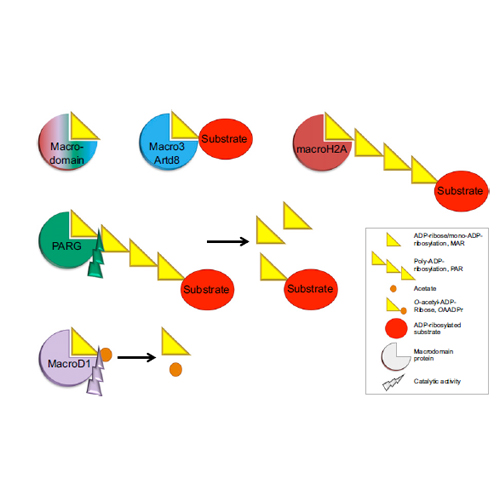Recognition of Mono-ADP-Ribosylated ARTD10 Substrates by ARTD8 Macrodomains
05-Mar-2013
CELL Structure, 2013, doi 10.1016/j.str.2012.12.019, Volume 21, Issue 3, 462-475 published on 05.03.2013
CELL Structure, online article
CELL Structure, online article
ADP-ribosyltransferases (ARTs) catalyze the transfer of ADP-ribose from NAD+ onto substrates. Some ARTs generate in an iterative process ADP-ribose polymers that serve as adaptors for distinct protein domains. Other ARTs, exemplified by ARTD10, function as mono-ADP-ribosyltransferases, but it has been unclear whether this modification occurs in cells and how it is read. We observed that ARTD10 colocalized with ARTD8 and defined its macrodomains 2 and 3 as readers of mono-ADP-ribosylation both in vitro and in cells. The crystal structures of these two ARTD8 macrodomains and isothermal titration calorimetry confirmed their interaction with ADP-ribose. These macrodomains recognized mono-ADP-ribosylated ARTD10, but not poly-ADP-ribosylated ARTD1. This distinguished them from the macrodomain of macroH2A1.1, which interacted with poly- but not mono-ADP-ribosylated substrates. Moreover, Ran, an ARTD10 substrate, was also read by ARTD8 macrodomains. This identifies readers of mono-ADP-ribosylated proteins, defines their structures, and demonstrates the presence of this modification in cells.











